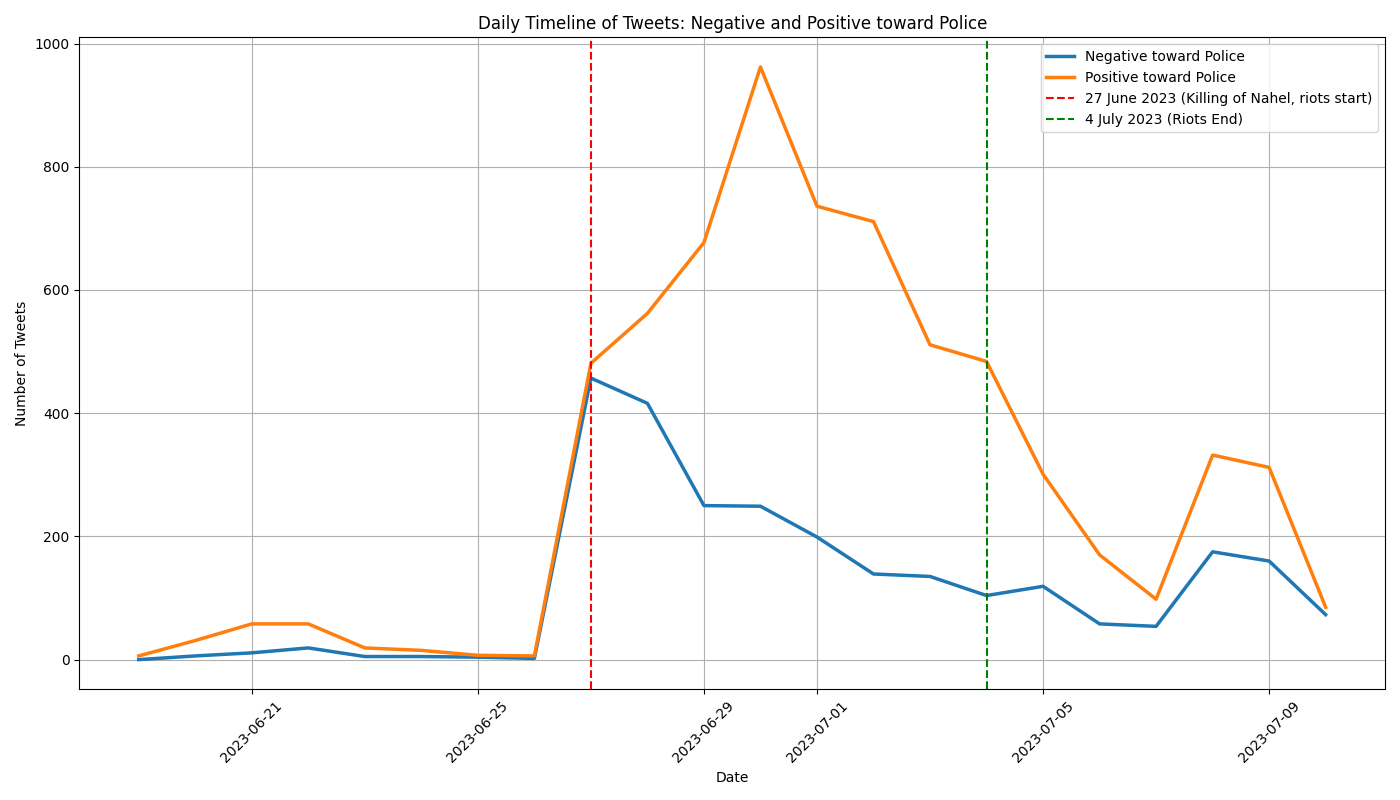The 2023 French Riots
By Matteo Vergani
Between 27 June and 4 July 2023, France experienced widespread unrest following the police shooting of 17-year-old Nahel Merzouk in Nanterre. The riots, which extended across multiple cities, resulted in extensive property damage, arson, and looting. Key statistics include:
The event became a focal point for national polarisation, shifting public discourse over policing, state authority, and social cohesion.
Data Analysis
To assess the public response, a dataset of 40,000 tweets from French accounts was collected between 19 June and 10 July 2023. Sentiment analysis was conducted using a generative AI language model, which classified tweets into pro-police and anti-police sentiments. The study also examined shifts in public support for Nahel versus the officer who shot him.
Key patterns emerged:

The riots following Nahel’s killing exemplify a recurring cycle of grievance and control. The root cause of the riots was not Nahel’s killing per se; rather, his death was the spark that ignited an already volatile situation. The underlying ‘fuel’ consisted of deep-seated social conditions, including marginalisation, poor future prospects for young people in the banlieues, and broken trust between democratic institutions and government agencies (such as the police) and the population living in these areas. Our data illustrates the stark divide among the French public and the growing polarisation between supporters of law enforcement and those frustrated with police actions. These fractures are deepening political divisions and fuelling broader societal polarisation. Social media, in particular, plays a crucial role in visualising these tensions and acts as a magnifier of public sentiment, providing an infrastructure for individuals to express and amplify collective emotions.